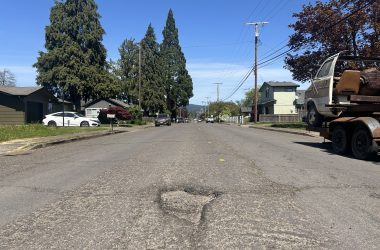By Aliya Hall
Staff reporter
Live Healthy Lane wants to make sure their data is telling the right story.
Healthy Lane (LHL) has been collecting feedback from communities to see if the data from their focus groups and surveys is accurately reflected in their assessment, which identified health issues in Lane County over the past three years.
The results of those surveys, the Community Health Needs Assessment (CHNA), were presented at a forum in Cottage Grove last week, to see if participants found the data reflective of the community.
LHL Director of Health Senna Towner said that, overall, there hasn’t been feedback from people that is surprising, or that the information does not look right. That said, there were only around eight individuals present from the community.
They ranked the importance of issues as: affordable housing, living wage jobs, mental health/addiction services, affordable healthy food, affordable childcare, healthy behavior efforts and dental care.
One survey explored opinions of and experiences with the county’s community health efforts and how well the 2016-19 CHIP is working to address quality of life and health issues; participants are community members. The survey asked them their perception of how Lane County was responding to these issues.
While housing was seen as 82% worse and 2% better compared to the 2016 results, dental care was viewed at being 32% better and only 16% worse. For affordable healthy food, the perception that it’s gotten better was 26%, while the perception that it’s gotten worse was 27%. Towner said these results show that while there has been improvement, there’s still work left to do.
Community Focus Groups participants are populations underrepresented by the survey, such as the Latinx and youth communities, as well as the Senior and Disability Services advisory council. For the Latinx community in Cottage Grove, food and dental care were the top health concerns. The Cottage Grove Youth Advisory Council had healthy behavior efforts as one of their top issues.
Focus groups also targeted smaller rural areas to get a diversity of rural voices. Towner said that there are differences in issues that affect Lowell and Upriver Siuslaw; transportation was a bigger concern for Siuslaw while housing was the number one concern for Lowell residents. She added that it was a strategic decision to focus on those specific rural areas outside of urban Lane County, such as McKenzie Bridge and Oakridge.
At this point, it’s too early in the process to compare issues facing rural communities to those in urban centers such as Springfield, she said.
Using data to illustrate a narrative is an important tool that organizations use; however, the challenge is showcasing the data in a way that doesn’t misrepresent the issues, Towner said.
In the community survey, there were 573 participants, but participants could elect to not answer every question and the people who struggle with these issues may not have taken part in the survey, she said.
For example, affordable housing was ranked number one in importance for health issues and dental care was ranked seventh, the lowest priority – even though the person who filled out a qualitative description for it expressed that it was a crucial concern.
Affordable healthy food and childcare fell in the middle of this list, and Towner said that might mean people who aren’t struggling with access to those issues aren’t ranking it as high, versus something like housing that affects a broader group of individuals.
“We’re approaching (the assessment) as a process, and being open to continuing that process, whatever that means,” she said about troubleshooting, which might mean amending the report by collecting more feedback if there’s a big hole in the data. “We’re always exploring ways to make it more driven by the community and more digestible for the community.”







